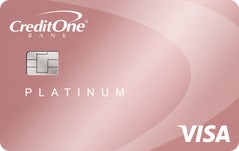The Capital One Platinum card takes a low-fee, low-maintenance approach to building credit. Although it lacks rewards value, it is convenient for cardholders with average credit who prefer a no-frills card as they work towards a good credit score.
Credit building: Focused approach to building credit responsibly
If you’re building your credit score with a credit card, it’s crucial to understand how a card can help you improve your credit before you apply. The Capital One Platinum card won’t distract you with enticing rewards or welcome offers. Instead, it lets you focus on building credit and includes some great features to help you along the way. Here’s how it can help:
Automatic credit increase reviews
Capital One will automatically review your account for a credit line increase after six months of responsible card use. Since a higher limit makes it easier to keep your credit utilization low, this perk is especially useful for anyone who plans to hold onto the card long-term. If approved, a credit increase after an automatic review is a great alternative to opening an additional card and adding a hard pull to your credit report.
Unlimited CreditWise Access
While CreditWise gives you snapshots of your credit score from TransUnion and Experian, it’s also a great tool for finding out why your score fluctuates. It gives suggestions on how to increase your score and can alert you when there is a change to your report, such as delinquent accounts or credit inquiries.
Assistance with Eno
Eno is Capital One's virtual assistant that can help you keep track of recurring charges, put reminders on free trials and provide helpful spending insights. It also assists in keeping your card safe by alerting you of suspicious activity and duplicate charges. This way, nothing sets back your credit journey.
Minimal fees: A favorable pick for cardholders looking to skip extra costs
The Capital One Platinum card charges as few fees as possible. Although you’ll still pay for cash advances and late payments, the Platinum card does not charge foreign transaction fees or an annual fee.
The card does charge late payment and cash advance fees, but these fees combined should be incentive enough to deter you from making late payments or withdrawing cash advances. Cash advances accrue interest from the transaction date, so you should avoid cash advances whenever possible. And making late payments could damage your credit score. Because the Capital One Platinum charges for both of these, it might help you stay on track when it comes to using your card, making payments and building credit. (See Rates & Fees)
Perks: Thin but convenient perks make this card competitive
This card isn’t bursting with extra perks and benefits like you might find with other cards. It only includes fraud coverage for unauthorized charges, emergency card services and Mastercard ID TheftProtection™. However, these perks offer enough security if you’re trying to fast-track your way to good credit to qualify for better cards with more lucrative rewards rates, perks and benefits.
These perks are also a nice security blanket for first time cardholders who might be wary of the risks associated with using credit cards. In 2023, credit card fraud was the number one reported instance of fraud to the Federal Trade Commission, with over 114,000 reports. Mastercard’s ID TheftProtection can help if you’re ever the victim of identity theft and, along with $0 fraud liability for unauthorized charges in the event your card is lost or stolen, Capital One can send emergency card replacements and cash advances (if you have available credit).










